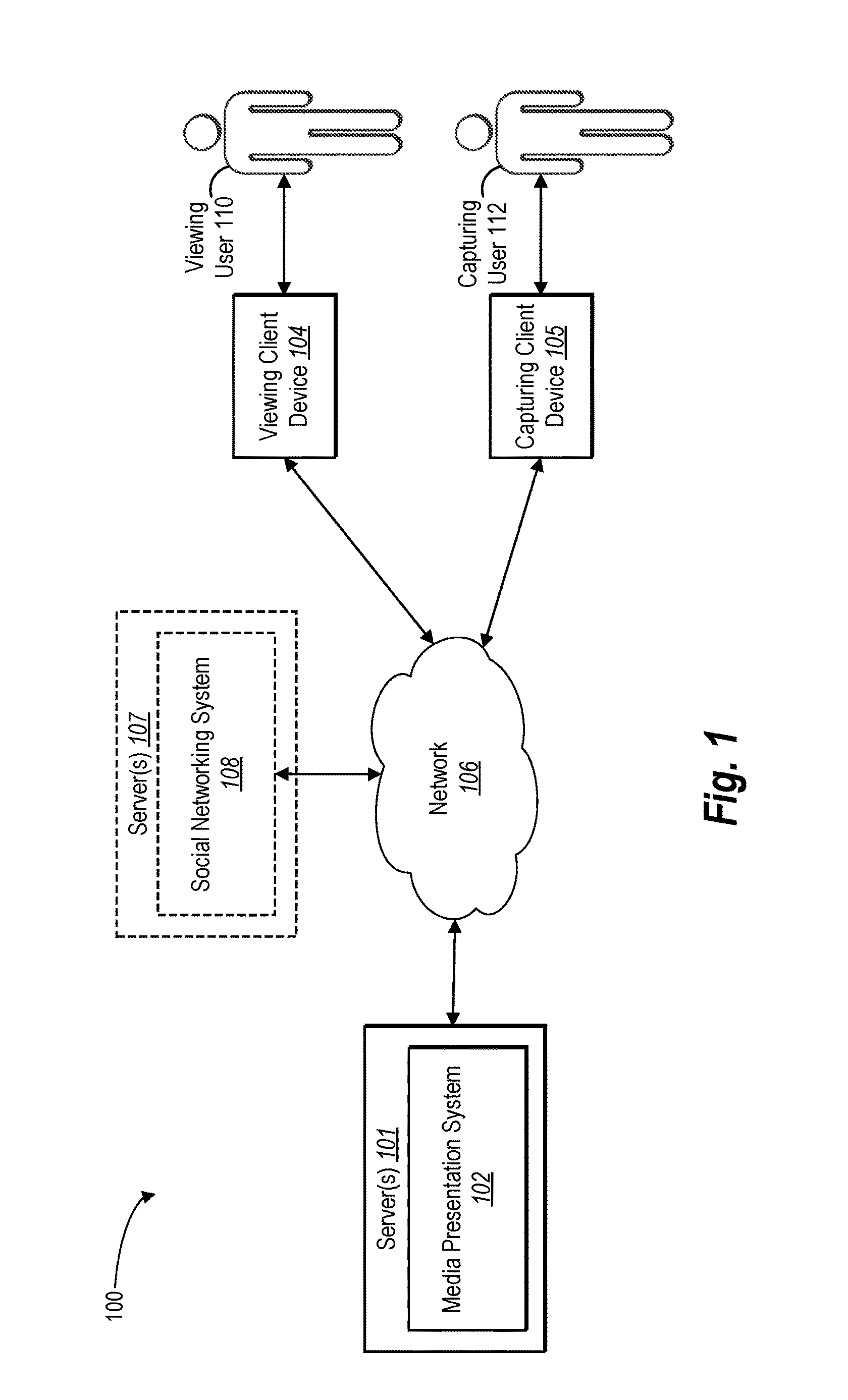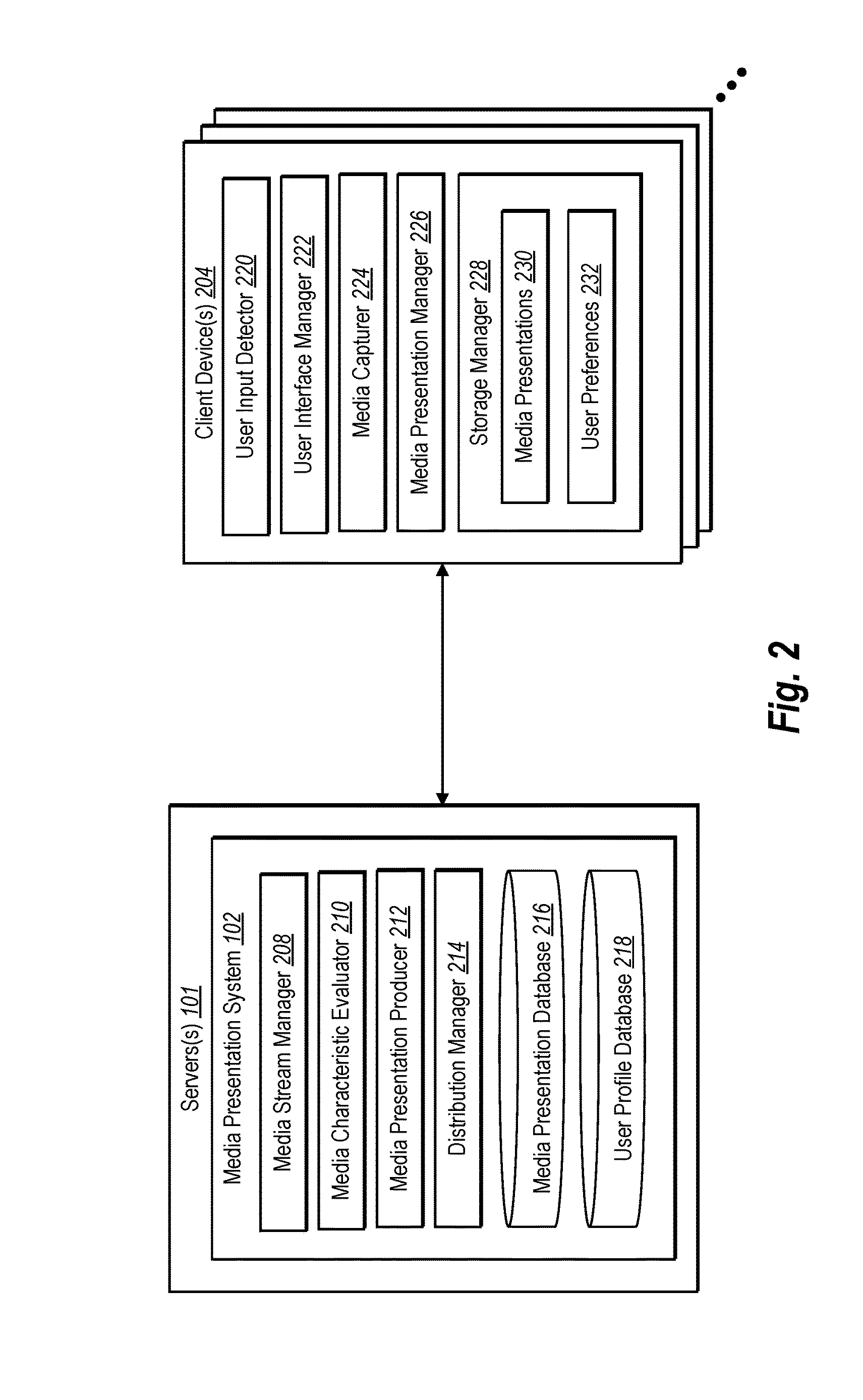Streaming media presentation system
a technology of media presentation system and media stream, applied in the direction of digital computers, broadcast service distribution, instruments, etc., can solve the problems of multiple unrelated media streams that are difficult for viewing users to navigate, locate, enjoy, and many drawbacks, and achieve the effect of easy production and higher quality
- Summary
- Abstract
- Description
- Claims
- Application Information
AI Technical Summary
Benefits of technology
Problems solved by technology
Method used
Image
Examples
Embodiment Construction
[0031]Embodiments disclosed herein provide benefits and / or solve one or more of the abovementioned or other problems in the art with a media presentation system that improves a user's experience for sharing and viewing a media stream. In particular, the media presentation system intelligently, produces, organizes, and shares a media stream in an intuitive and efficient manner. In some embodiments, for example, the media presentation system provides a user the ability, via a client device, to capture and provide a media stream (e.g., a video media stream) that the user intends to share with one or more other users (e.g., viewing users). Additionally, based on various features, preferences, and / or characteristics of a user, viewing users, and / or a media stream, the media presentation system can dynamically determine how to distribute a media stream (e.g., identify viewing users with whom to share a video stream). Moreover, in one or more embodiments, the media presentation system can ...
PUM
 Login to View More
Login to View More Abstract
Description
Claims
Application Information
 Login to View More
Login to View More - R&D
- Intellectual Property
- Life Sciences
- Materials
- Tech Scout
- Unparalleled Data Quality
- Higher Quality Content
- 60% Fewer Hallucinations
Browse by: Latest US Patents, China's latest patents, Technical Efficacy Thesaurus, Application Domain, Technology Topic, Popular Technical Reports.
© 2025 PatSnap. All rights reserved.Legal|Privacy policy|Modern Slavery Act Transparency Statement|Sitemap|About US| Contact US: help@patsnap.com



